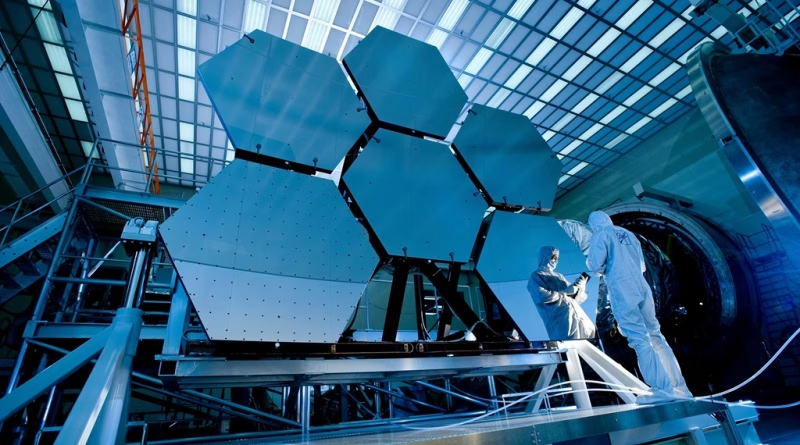The James Webb Telescope’s Latest Discoveries Explained Simply
When the James Webb Space Telescope (JWST) launched in late 2021, it promised to transform our understanding of the universe. In 2025, it’s delivering on that promise—and then some.
JWST isn’t just taking pretty space photos. It’s uncovering deep truths about the origins of stars, galaxies, planets, and even the possibility of life. But much of the science gets lost in technical jargon.
So let’s cut through that. Here’s what Webb has found—in plain English.
🕰️ 1. Galaxies Older Than We Expected
Webb has spotted galaxies that formed just 300 million years after the Big Bang. To put that in perspective: that’s like finding skyscrapers in a town you thought was just built.
What this means:
Scientists believed complex galaxies took longer to form. JWST is showing that the early universe was more structured than we imagined—pushing back the timeline of cosmic evolution.
🌍 2. Signs of Life-Friendly Atmospheres?
JWST’s ultra-sensitive instruments can analyze the atmospheres of distant exoplanets—planets outside our solar system.
In 2025, it detected carbon dioxide, methane, and even hints of dimethyl sulfide (DMS)—a chemical associated with life on Earth—on planets like K2-18 b and TRAPPIST-1c.
What this means:
We’re not saying “aliens,” but Webb is helping us figure out which planets might be habitable—and that’s a major step forward in the search for life.
🌫️ 3. Hidden Black Holes Found in Dusty Galaxies
Webb’s infrared vision allows it to see through cosmic dust—the stuff that blocks ordinary telescopes. It has now revealed dozens of previously hidden black holes inside dusty galaxies.
What this means:
Black holes are more common in the early universe than we thought, which could change how we think galaxies grow and evolve.
💫 4. Star Formation—Captured in Detail
Thanks to high-resolution images, we can now see how stars are born inside nebulae. The Pillars of Creation image was one of the first examples, but JWST has taken it further in 2025 with images of protostars forming in real time.
What this means:
We’re literally watching stars being born. This helps scientists understand the life cycle of solar systems—including our own.
🌀 5. A Closer Look at Giant Exoplanets
Webb has produced full weather maps of Jupiter and other gas giants. It’s detected storms, polar auroras, and temperature shifts across entire planets.
What this means:
It’s giving us real data on how atmospheres work outside Earth—and possibly how alien climates might behave.
📸 A Quick Recap of JWST’s 2025 Highlights:
| Discovery | Why It Matters |
|---|---|
| Galaxies at 13.4 billion years | Changes theories of galaxy formation |
| Possible biosignature gases | Refines the search for life |
| Dust-hidden black holes | Explains early cosmic structure |
| Nebulae star births | Shows star formation in action |
| Exoplanet weather | Gives us real climate data beyond Earth |
🧭 Final Thought: A Time Machine in Orbit
The James Webb Space Telescope is more than a high-powered camera. It’s a time machine, a planetary detective, and a cosmic archaeologist—all in one.
Its discoveries in 2025 are forcing us to rewrite textbooks, rethink timelines, and reimagine what we know about our place in the universe.
And the best part? It’s just getting started.




